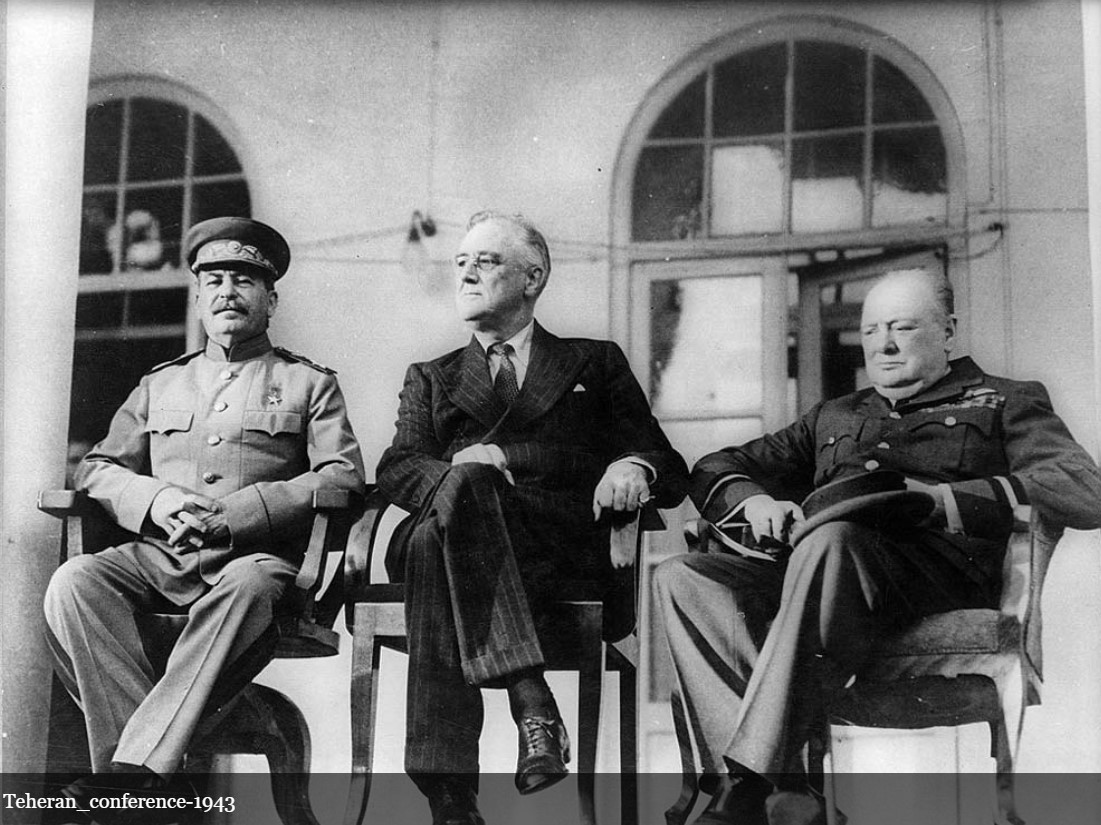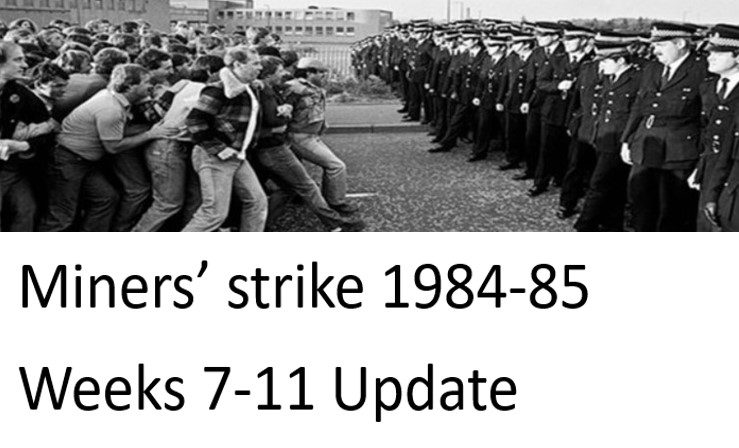By Andy Ford of Warrington South Labour. The latest in his occasional series of historical articles on WW2.
Eighty years ago, Stalin, Roosevelt and Churchill met in the Soviet embassy in Iran to discuss the shape of the post-war world.
The context was set by the Soviet victories at Stalingrad and Kursk which had made it very clear that the Red Army was going to prevail over the Nazis. In the course of the year the western allies had landed in Italy and Mussolini’s regime had fallen, but due to a series of mistakes progress was slow.
In military matters the uneasy allies agreed to support Tito’s partisans in Yugoslavia rather than the right wing Serbian Chetniks, made plans to bring Turkey into the war (delayed by the Turks until February 1945), and to launch co-ordinated offensives in summer 1944, which became D-Day and Operation Bagration. The callous arrogance of the ‘Big Three’ was shown when with a few strokes of a pen they agreed to move Poland a hundreds of miles to the west – which would entail the forced movement of hundreds of thousands of people.
Politically the conference agreed a joint approach to Europe after the war. Both the western allies and the Stalinists were terrified of an independent working-class movement developing as the Nazi stooge regimes either collapsed or surrendered. The seeds were plain to see with mass guerrilla movements developing in Yugoslavia, Albania, Greece and Italy, and the Polish Home Army mounting increasing resistance to Nazi genocide “under the very heel of the invader”.
Working class uprising
What had really set their nerves jangling was the working class uprising in the Italian cities with mass strikes and sabotage even in the face of ruthless German oppression. The backbone of most of these movements were the Communist Parties, which although they nominally owed allegiance to the Soviet Union, threatened to get out of hand and fall under the control of their own workers and peasants.
The solution agreed upon was that the Communist Parties would enter the official governments of the liberated countries and would not take state power! Stalin agreed that they would uphold ‘law and order’ i.e., the rights of capitalist property, rather than moving to socialism! The Italian Communists were to be admitted to the internationally recognised government and the Stalinists would instruct their forces to retreat from the factory occupations and proto-Soviets that were emerging. In return Britain and America granted Stalin the 1940 Soviet frontier achieved after his agreement with Hitler, and a free hand in the Baltic states.
One of the leading Trotskyists in Britain at the time, Ted Grant (1913-2006), denounced the outcome of the conference in no uncertain terms in December 1943, calling it a “repulsive ceremony”. [read his analysis here].
He pointed out that the “unexpected resilience” of the Soviet Union, had compelled the “imperialists temporarily to arrive at an agreement with her.”. He foresaw “revolutionary explosions” if events were to spin out of the control of the three great powers.
Stalin feared socialist revolution
He went on,
“But the overwhelming majority of the peoples of occupied Europe look towards the Soviet Union for a way out. And in Britain, and America too, the working class looks towards the Soviet Union with sympathy. Thus the imperialists are compelled to attempt a compromise with the Kremlin bureaucracy. They can do so because Stalin fears the Socialist Revolution in Europe as much as they do themselves. Against the Socialist Revolution in Europe they have a common basis. The Stalinist bureaucracy is the only force, they recognise, which can assist them in smashing the movement of the masses in Europe.”
At that stage the western allies, maybe based on contact with the leading military circles in Germany, were still hoping for a coup or assassination against Hitler, in which case they could quickly ally with Germany and stop the Red army in its tracks. It nearly happened with the bomb plot of July 1944, but against all odds Hitler survived and so a fight to the bitter end took place with the Allies and the Red Army racing for Berlin.
The Teheran Conference only sketched out the future of Europe, with the detailed development of events largely dictated by whoever was the occupying power in each country. But Teheran was the first step in the two opposing systems – of Stalinism and Anglo-American capitalism – moulding the continent in their interests.



